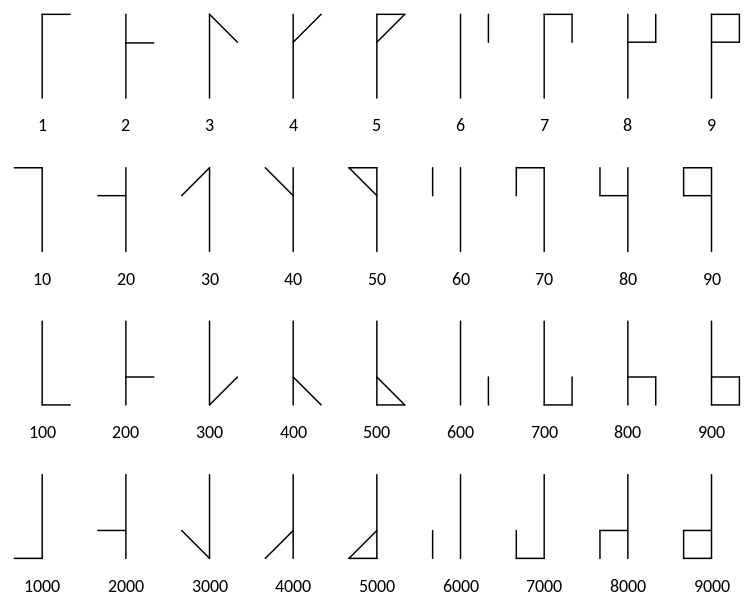Before the Arabic system became cemented as the world standard of numbers, there were Roman numerals. Each conquered nation adopted the Romans’ counting style, spreading the system across Europe and into Asia. The system is not without its difficulties, however, and some folks strove to make a simpler, easier to follow system. That’s where medieval Cistercian monks came in.
From the 13th to 15th centuries the Cistercian monks of Europe developed and used a brand-new numeral system. Called Cistercian numerals, this counting method is notable for its incredibly condensed form. Just a few lines could record any number from 1-9999. At a glance the system can seem dizzying, but the numbers don’t lie — they’re just hard for us to understand.

How it works
While it may seem intimidating, the system is actually quite simple once one has a grasp on the first 10 numbers. As we mentioned, the Cistercian system can represent any 4 digit number. Each of the four digits is relegated to a quadrant. Imagine a graph with an X and Y axis drawn. The upper right is for single digits (1-9), the upper left is for the second digit (10-90), the bottom right for the third (100-900), and the bottom left is for the fourth (1000-9000).
By assigning these figures in the correct quadrant we can make any number. All one needs to know to transcribe it to the Arabic form is to recognize the first 10 shapes and place each digit in the corresponding quadrant. Fittingly enough, the figures are all aligned on this X/Y axis, which stands as a cross. The Cistercian numerals were almost like a numerical metaphor for Christ at the center of all things.
If you’re still not getting it, don’t worry; you’re in good company. We were puzzled too until we watched the informative video from Numberphile featured above. The video delves into the system around halfway though, but gives some interesting background on the monks in the first half. The presenter even notes that the inventive Cistercians created an early form of sign language.
Where they went
While the Cistercian numerals were very sleek and condensed, they did not lend themselves well to arithmetical calculations. Instead, they found use as date markers, page numbers, and even were used in musical composition to note the meter. ZME Science notes that the Cistercian symbols were also used in astronomy and can be found engraved on medieval astronomical tools.
In the end, since the Cistercian numerals could not be used for equations, the Arabic system won. Unfortunately, the system was too difficult for printing presses to cover, and so Roman numerals continued to be used in its place. The system had a brief resurgence in 20th-century cryptology, but today it is largely forgotten. Regardless, for nearly 300 years, Cistercian monks from England to Italy and from Normandy to Sweden enjoyed this fascinating numeral system.

Read more:
Discovery of sourdough bread oven offers insight into a medieval Cistercian monastery
